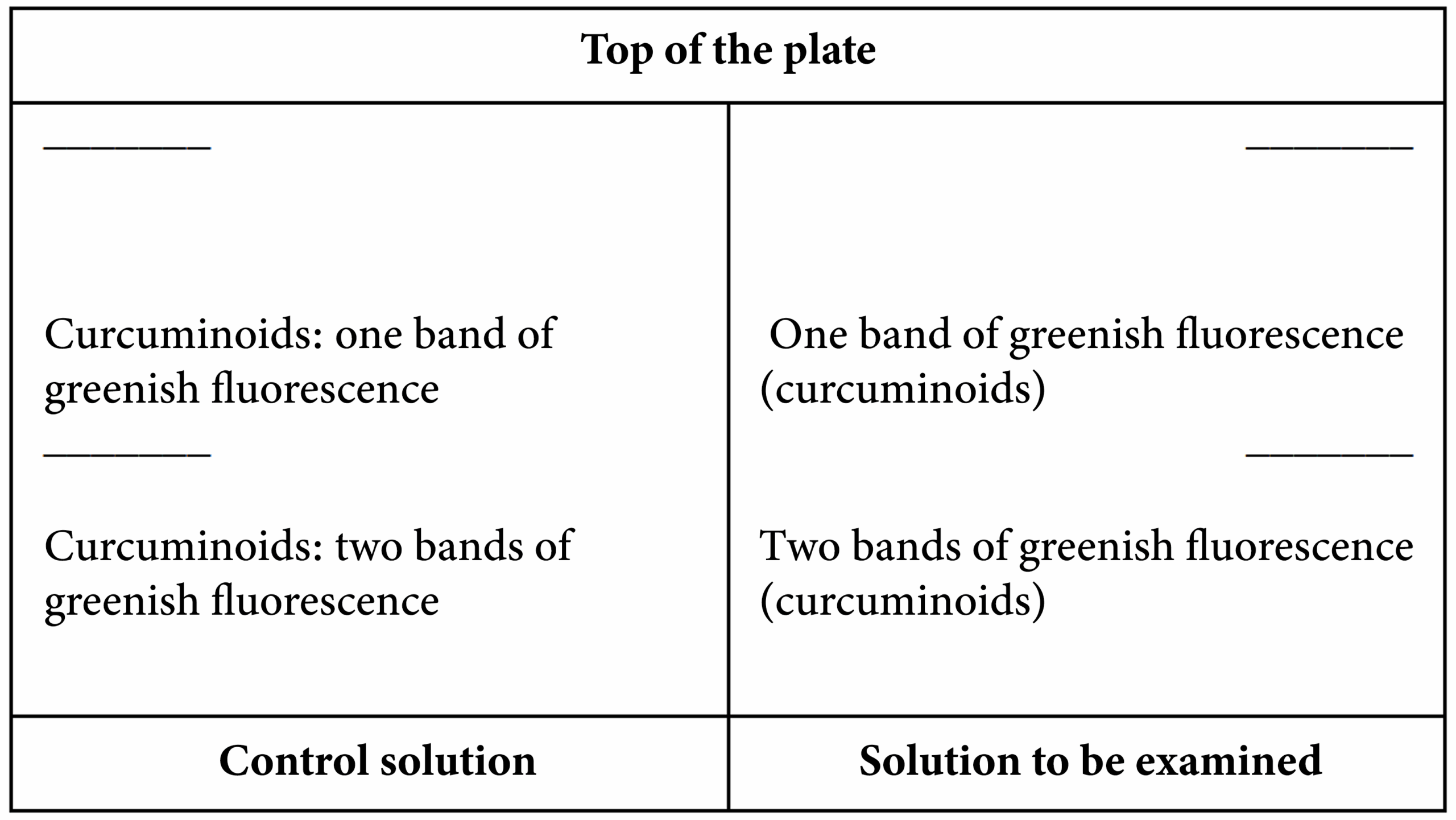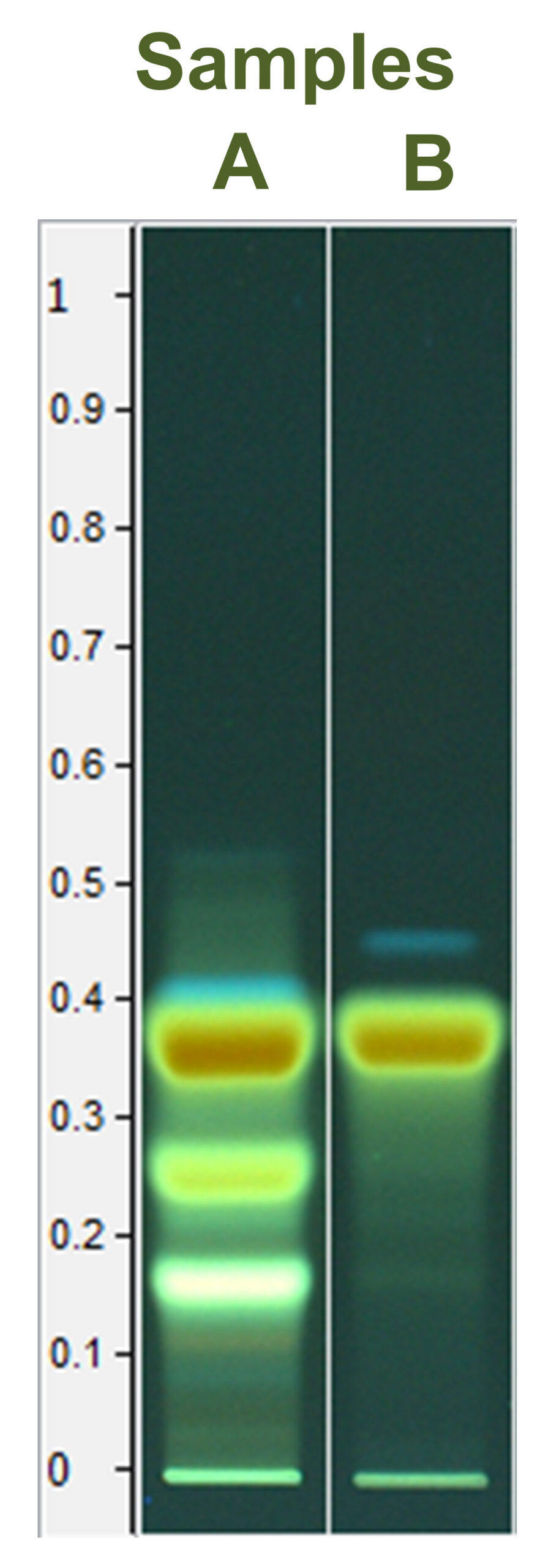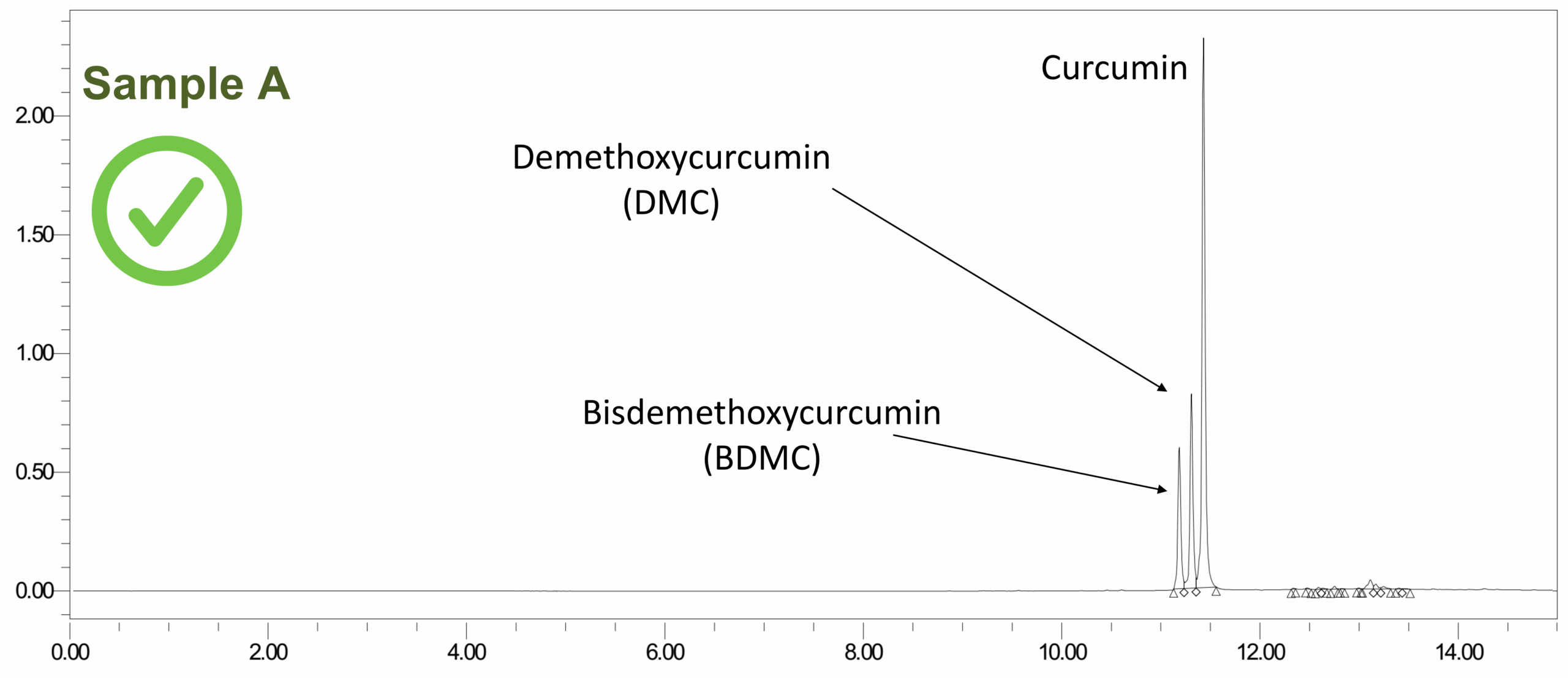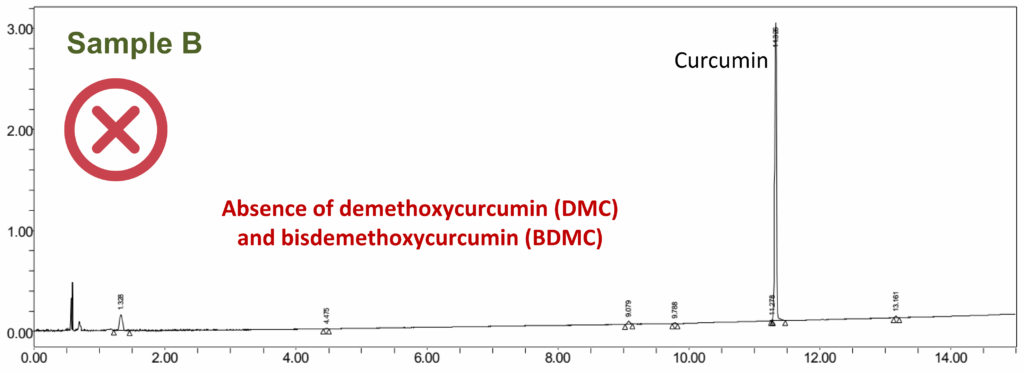Detection of enrichment of Curcuma longa L. dry extracts with synthetic curcumin
Origin and properties of Curcuma longa L.
Turmeric is a plant from the Zingiberaceae family that has been used for centuries throughout Asia. Based on its antioxidant properties, turmeric has long been used as a natural food preservative. In traditional use, the rhizome is employed cut into small pieces, heated, and dried before being ground into powder. In this context, it is used to promote bile production and secretion, support digestion in cases of discomfort, and stimulate appetite. More recent research shows that it may help reduce blood cholesterol levels and act as an anti-inflammatory in chronic diseases such as rheumatoid arthritis, osteoarthritis, and inflammatory colitis.
Its main active compound: curcumin
The substances primarily responsible for these actions are curcuminoids, particularly curcumin, the dominant compound that also gives the rhizome its intense yellow colour. Curcumin can be synthesised relatively easily. Two main methods are described: chemical synthesis according to Pabon (a multi-step process involving several washing steps), and the Pavolini method, which is a single-step process with a 10% yield and a reaction time of just 30 minutes. This reaction involves one equivalent of acetylacetone and two equivalents of vanillin, in the presence of boron trioxide.

Study of Curcuma longa L.
Adulteration of Curcuma longa L. through enrichment with synthetic curcumin
Since the major compound of interest can be synthesised relatively easily, it is reasonable to assume that adulteration is widespread in market products. In 2019, Italian health authorities linked 27 cases of liver damage to the consumption of turmeric-based dietary supplements in capsule form (containing dry turmeric extract). The exact cause was not determined. However, it is known that turmeric extracts sold on the market are often highly concentrated in active compounds (>95% curcuminoid derivatives), and that what is labelled as turmeric may in fact be solely synthetic curcumin.
It is therefore essential to distinguish between a dry extract obtained solely from Curcuma longa L. rhizomes, an extract enriched with synthetic curcumin, and a sample composed entirely of synthetic curcumin.
How to detect the presence of synthetic curcumin
There is a monograph of the European Pharmacopoeia (01/2015:2543) that seems to allow for the separation of curcuminoids (see Figure 2), but the interpretation described in it (see below) is very brief and makes no mention whatsoever of the possibility of synthetic curcumin being present and therefore does not allow for its verification.

Interpretation of the TCL / HPTLC plate according to monograph 01/2015:2543: The chromatograms obtained with the control solution (curcuminoid standard) and the solution to be examined.
Additionally, other low-intensity bands may be present in the chromatogram obtained with the solution to be examined.
Client sample analysis
The addition of synthetic curcumin alone can be detected by HPTLC (Figure 3) or by HPLC (Figures 4 and 5).



However, when a quantity of synthetic curcumin is added to the dry extract, detecting the adulteration is much more challenging by HPTLC (because the verification is purely visual) than by HPLC (where the ratios between the three curcuminoids can be precise and compared to databases).
Proving the quality of Curcuma longa L. through HPLC analysis by BotaniCERT
Furthermore, the disadvantage of the HPTLC method is that the analysis will only detect curcuminoid derivatives. If other compounds are present in the dry extract, they will not be detected. Contamination by another species cannot be detected using this method, unlike HPLC analysis, which can detect it, provided that a proper database is established.
Performing an appropriate control is important for your plant-based products, as frauds are often subtle and difficult to detect.
How can you ensure the quality of your Curcuma samples?
By proving the presence of curcuma, the absence of other plant species, the absence of enrichment with synthetic curcumin, and by verifying the quantities of active compounds claimed.